
Battling a hungry beetle, this Mohawk community hopes to keep its trees — and traditions — alive
An invasive pest threatens the survival of black ash trees — and the Mohawk art...
From the historic agreement that created the Great Bear Rainforest to B.C.’s Dasiqox Tribal Park to uniquely co-managed forest resources in Labrador, Indigenous-led conservation efforts are transforming the way Canadians understand and practice conservation.
Far from the colonial idea of preserving natural landscapes from human incursion, Indigenous land use plans put sustainable human-nature relationships that seek to revitalize traditional cultural practices at the centre.
It’s a vision of conservation and land use planning that can help Canada deliver on its promise of reconciliation and a renewed nation to nation relationship, according to Valérie Courtois, director of Indigenous Leadership Initiative.
In the recent federal budget, the Trudeau government committed $1.3 billion towards the creation of protected areas in Canada and some of those dollars are specially earmarked to support Indigenous participation.
We asked Courtois to speak with DeSmog Canada about Indigenous-led conservation, why it’s important and how it could transform Canada from the ground up.
This interview has been condensed and edited for brevity and clarity.
Yes.
Certainly the courts have been pretty clear on these things and — to government’s credit — it feels like they’re not just doing the bare minimum of what the courts have asked them to do in this reconciliation process.
This is really about resetting and renewing the relationship between crown governments and Indigenous peoples.
At the same time as that’s happening there’s also a real nationhood movement within Indigenous peoples — we have a population that is more educated, getting more sophisticated in terms of its political strategies and voices and certainly has never had more capacity to manage lands within a modern land management context.
I’m not dismissing exciting governance systems of lands that were there for thousands of years, but this movement towards nationhood and the seriousness of being nations is happening at this same time as this recognition is happening.
We not only have the ability to fill that space but be very creative and provide leaders in that space because of this movement that’s happening in our communities too.
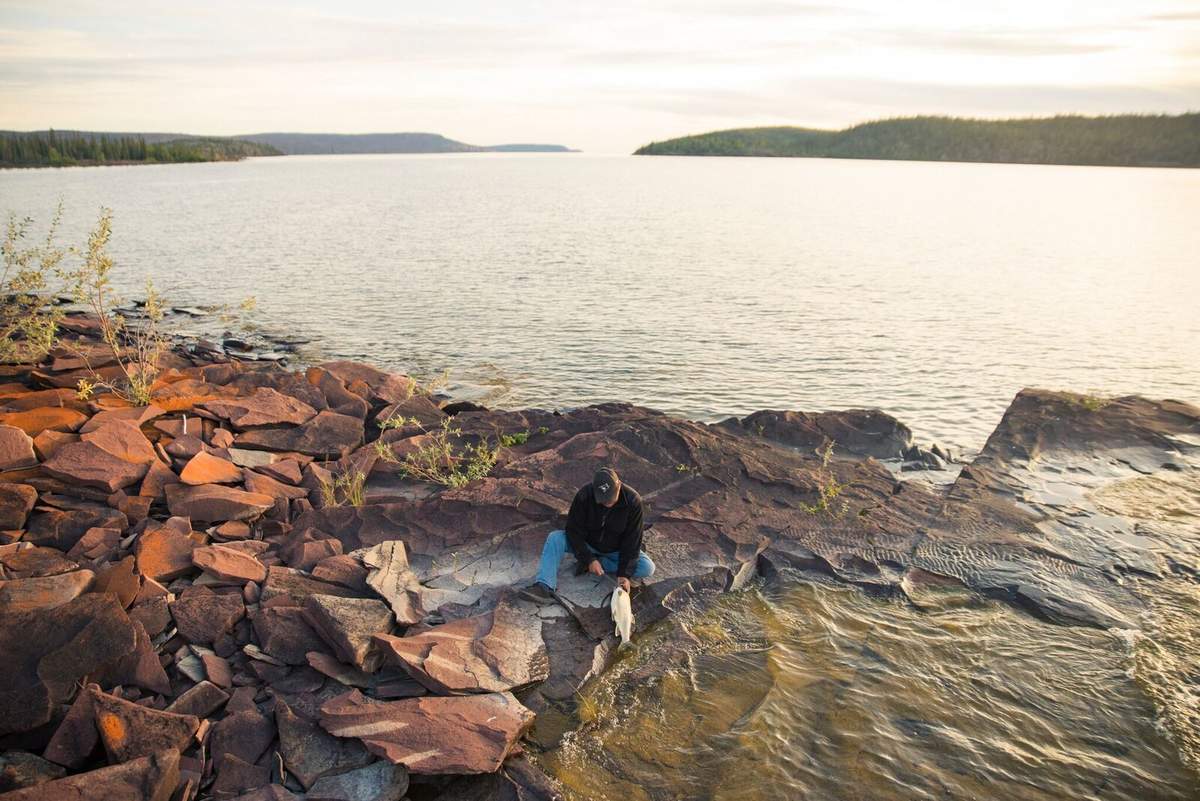
The Lutsel K’e First Nations and Crown governments are co-creating the proposed Thaidene Nene National Park Reserve along the eastern shores of Great Slave Lake. Photo: Pat Kane
For me it’s hard to talk about Indigenous nations outside the context of my own but when we think about nationhood it’s all about who you are where you are — who you are within the land that is your home.
And conservation is one of the tools that allows us to fulfill a responsibility to our land within the reality of it being the central core of who we are as nations.
Much of our nationhood over time has been undermined because of the impacts on that relationship, whether that’s residential schools that took us away from the land or crazy development projects.
So, for example, if you’re a member of West Moberly First Nation in northeastern B.C., it’s very tough to be who you are on that landscape, especially if you consider the community’s historic relationship with caribou.
You can now count the remaining number of caribou there on two hands.
That free-for-all mentality of ‘the land is open,’ has really had a huge impact on the cultural survival on our nations.
So any tool that allows us to protect that land we need to be who we are and to be a part of decision-making on scale, pace and scope of development — especially if that develop is done to our benefit — then that will create some good scenarios.
I’m Innu. We’re caribou people. Our whole lifestyle revolves around following migratory and woodland caribou herds, which means we need a lot of space to be who are as a people.
When we talk about protecting lands in the east we’re not just talking about the forest, we’re talking about huge caribou landscapes.
Our elders say all the time: for us as Innu, if the caribou disappear we won’t be Innu anymore.
It’s a fundamental thing and the caribou situation right across this country is very worrisome.
Absolutely.
Also a gateway in terms of getting people to see beyond the evident value that touches them.
So, for example, I used to do this all the time, when I would host meetings in the community. When I’d tell people it’s about the forest management plan, we’d get two people.
If we said it was about caribou, the whole community was there. They’re the same issue — it’s all about habitat management and the amount of forest that is available.
But that species and that relationship compels people more and that’s something we use to improve our community based processes as well.
Right now if you’re in central Manitoba and your First Nations I can guarantee you’re worried about moose.
There’s a decline generally with moose there and you’ve got a declining forest industry.
To me that would be a great opportunity to think about, ‘okay shouldn’t we take this opportunity to think about other values forest has to save the moose and perhaps eventually create a context for a more sustainable forestry industry?’

Indigenous Guardians from Lutsel K’e will help manage the proposed Thaidene Nene National Park Reserve, monitoring water quality, wildlife and cultural sites. Photo: Pat Kane
There’s always this effort of finding ways of a parallel recognition of Indigenous science and western science in what we do.
When we were leading the Innu Nation our Elders said, it’s important to know Innu science but your job is to use the best information you have to make decisions — no matter where that comes from.
We hear that more and more with from communities who are looking at science not so much as a barrier anymore but as a body of knowledge in itself that is separate than their own but to be acknowledged and to be valued.
In terms of the conservation community generally, it has been and can be another form of colonialism, another way for other people to put a value on your land that isn’t your own.
There is a risk for conservation organizations if they push things based on their own values.
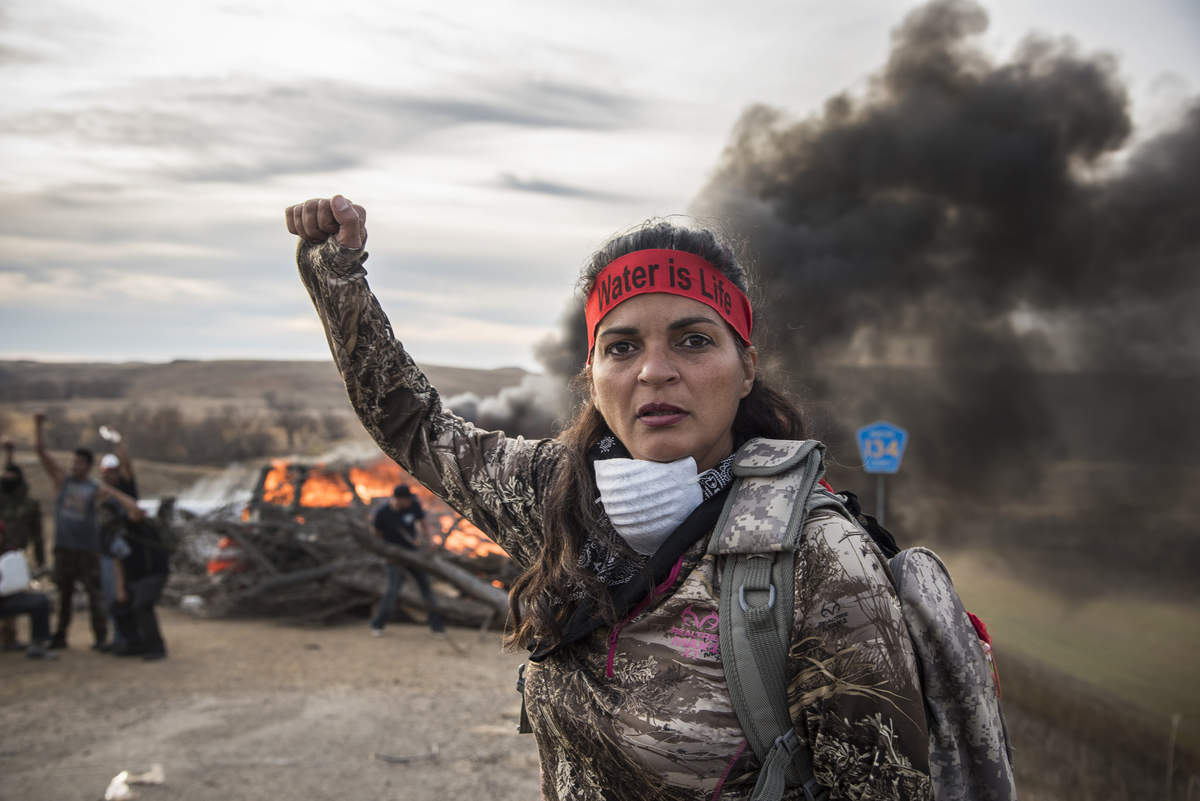
A field medic at the standing rock protest of the Dakota Access Pipeline. Photo: Avery White | Oceti Sakowin Camp via Flickr
And that’s why a lot of conservation organizations have had trouble in the past working with First Nations. You see this in the media every once in a while — this idea of conservation being a new colonial frontier.
But there are ways to avoid that and ways for First Nations to make sure they choose the right partners. Some are developing partnership protocols which state what they look for in partners, state what they are looking for in organizations that want to work on their land and what the processes should be.
When those protocols exist relationships tend to be much more fulsome.
There’s a risk in that but there are things organizations can do to create the right space.
The thing I worry about with conservation organizations is this idea that Indigenous people cannot be a means to the conservation organizations’ ends. So if they’re looking at this budget and saying ‘we need to protect areas by 17 per cent’ and they look at a map and say it needs to be areas A, B, and C, then they’re going to say we need to talk to First Nations Area A.
That’s a problem. That is not the right place to start a relationship.
The relationship needs to start with the goal of having Indigenous leadership and nations make decision on their lands. That needs to be the end goal itself as opposed to a means to an end.
I can’t think of one landscape in Canada that hasn’t been affected in some way by humans.
It’s a false premise to think that landscapes are at their best without us.
It’s not the natural state in much of North America. And we’ve seen that whether it’s the use of fire to create berry areas or to manage large wildlife species.
When I was working on the forestry plan out here in the east and talking with the elders about fires, I was looking on a map where the fires were and elders were saying, ‘yeah, I lit that because I wanted a berry area 10 years later.”
This idea of absence is totally artificial. We’ve been living with that balance or with that relationship as humans in nature for 10,000 plus years — in some places on the coast 13,000 plus years.
Obviously that’s a sustainable model!
To me, this deep ecology where people have to be separate from nature is completely artificial.
If I could use an expression from Trudeau: ‘that’s so 1970.’ We’re so far beyond that.
The other thing is that ecosystems, they’re not just for nature, they’re for us, they are our habitat. As Indigenous peoples we are a part of that biodiversity.
Article 8(j) on the Convention on Biological Diversity actually says that: Indigenous peoples are part of biodiversity of nature.
It’s false to think you can separate those things. Conservation and any management of land is the way we’re going to preserve cultures and have them flourish and really achieve their aspiration as a society.
We have that responsibility as a nation, we’ve affected over 50 different cultures through colonialism. It’s the right thing to do —to encourage that link.
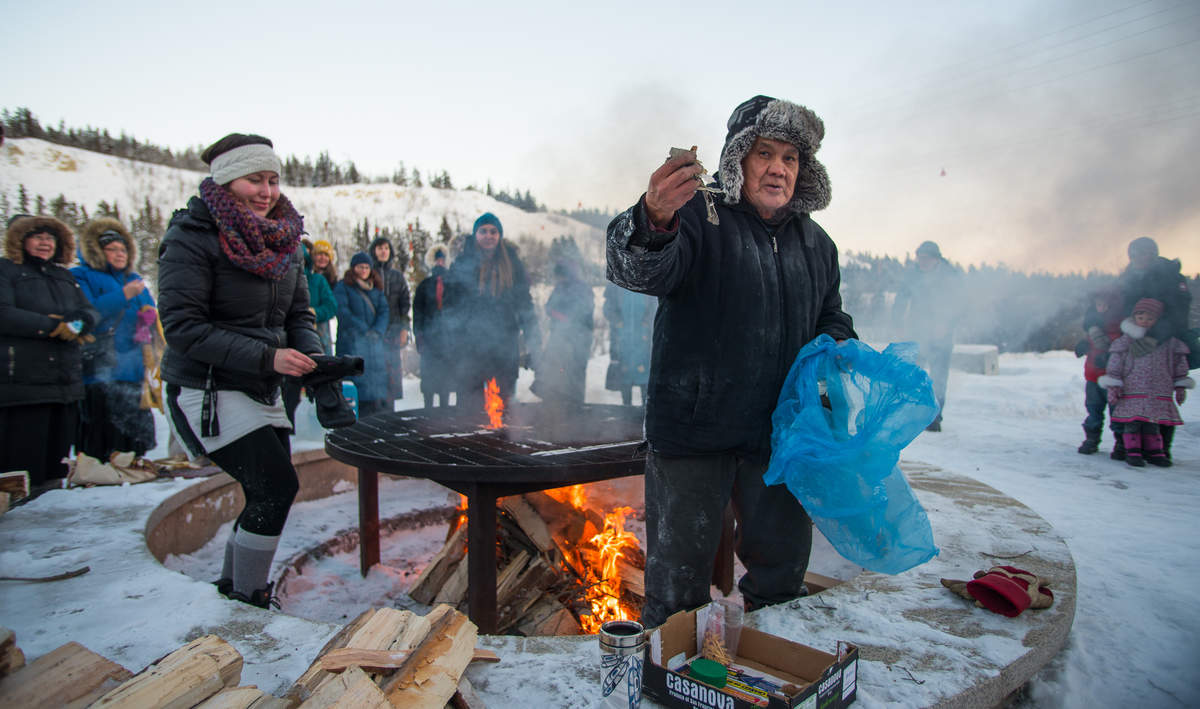
Na-Cho Nyak Dun elder Walter Peters leads the fire ceremony during the Protect the Peel victory celebration at the Kwanlin Dün Cultural Centre, February 2nd, 2018. Photo: Matt Jacques
Yes, for sure.
I guess the best way for me to answer that question is to speak about an example here in Labrador.
Innus have been in negotiations for a treaty for over 30 years. In that 30 years there’s been one of the world’s largest hydro projects and a second one is in development now.
We’ve seen the world’s largest nickel mine and the expansion of the world’s largest iron facilities. Development has really progressed at quite a pace.
If you’re the Innu Nation and you’re looking at your lands 30 years ago when you started negotiations and looking at them now you have less opportunity as a nation to think about sustainable revenue streams, to think about what you’re going to do on your land base and how you’re going to draw your revenue sources out of your land base.
Those opportunities diminish as things get taken off the land whether that’s trees, minerals or water or whatever.
So conservation in the Innu Nation case as they were negotiating the treaty, they’re said look we’ve got this forestry issue where we can really test out what co-management and our relationship over the long term could look like on these forest resources.
So the Innu Nation and the province signed a unique co-management agreement that doesn’t involve a third party.
This is another interesting thing about Indigenous leadership: it can also help out with non-Indigenous communities.
Here in Goose Bay, when the government first started talking about doing forestry, the community didn’t want anything to do with it. There was a settler group here in town who didn’t trust government at all.
They created a group that was essentially a protest group to the forest process.
When the Innu came on, they cooled their jets. They were like, ‘oh, the Innu Nation cares about the environment. We know because they blocked NATO, blocked Inco, they intervened on these processes that could have been devastating to the environment.’
The fact that we were there brought them enough comfort that they were no longer going to protest the process.
It was fascinating. We could really see it.
I was there for the consultation process and I witnessed that shift from going from ‘we don’t trust anyone in government’ and a very aggressive approach to seeing Innu guys there in their guardian uniforms talking about their values saying ‘we trust this plan.’
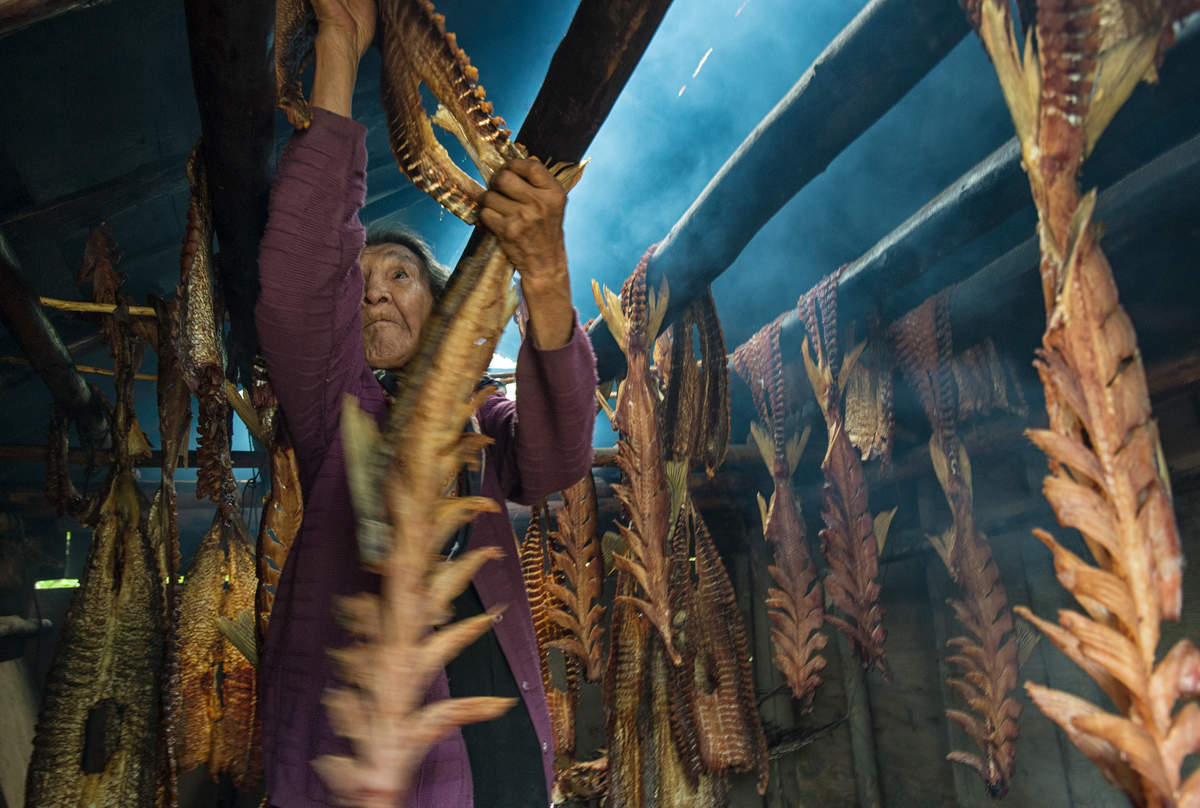
Fort McPherson elder, Agnes Neyando, hanging whitefish taken from the Peel River. Agnes and her husband spent their summers living in a wall tent along the river, into their 90s. Photo: Peter Mather
I’m a generally optimistic person, generally hopeful person. I think there’s never been a moment in time like we’re in now for a) the Indigenous empowerment movement to be where it is and b) of our awareness of environmental risk and the importance to conservation.
That’s the key moment in time and it’s important for us who work on these issues to think about that moment in time and advance things as much as possible.
The reconciliation movement in this country will only become truly real when we figure out the land jurisdiction question. When we think about respecting Indigenous peoples on their lands while balancing the reality that we are a federation and the settler population is here.
So what does that look like? What does our shared future look like?
It this that shared future is one where nations are strengthened and jurisdiction is figured out.
When that happens, when Indigenous people have their relationship with land fully restored and cultures are strengthened and that responsibility and sense of stewardship is re-fostered I think we’re going to have the best managed ecosystems in the world, we’re going to be global leaders in that reality.
We’re going to have Indigenous peoples that are coming into who they’re supposed to be, which are strong nations who care for the land.
I feel like it’s essentially the fulfillment of the eighth fire prophecy.
The prophecy tells about how Indigenous people are going to rise up from the ashes of colonialism and this dark period we were in over the last 200 plus years and really rise up to finally become who we are meant to be: these leading land carers that others look to for inspiration and leadership on those issues.
I very much feel like we’re in the moment of that happening.
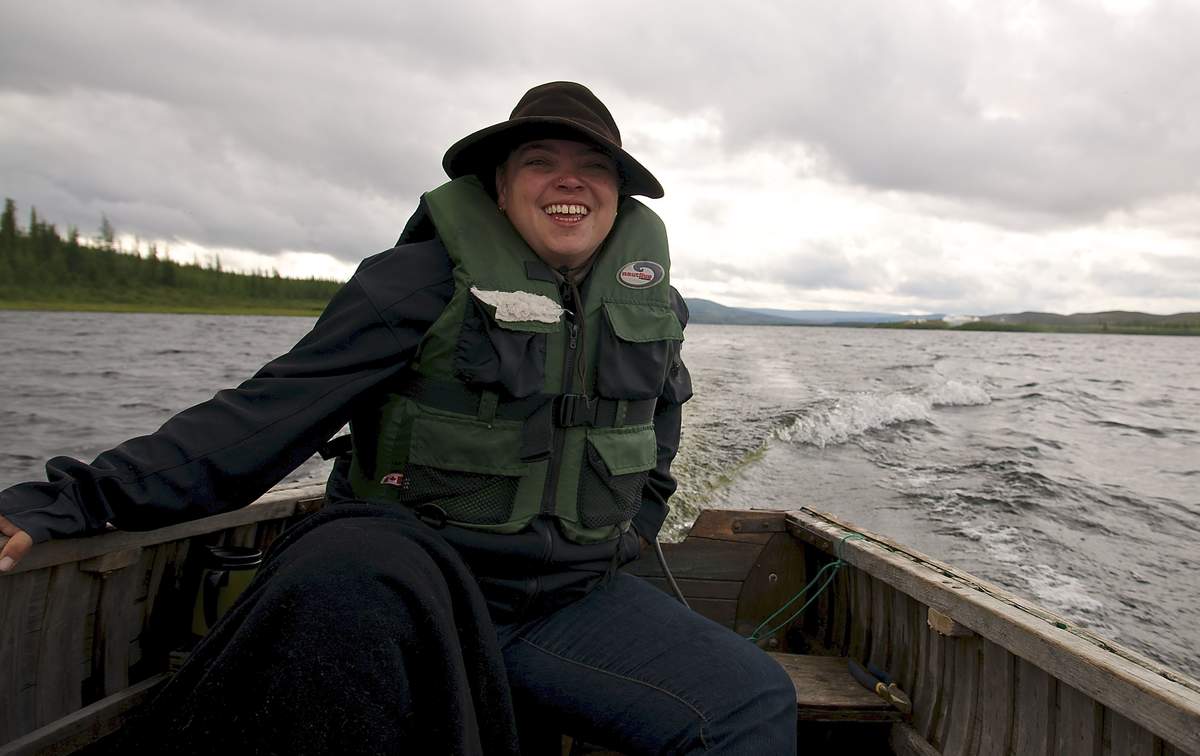
Valérie Courtois. Supplied
Get the inside scoop on The Narwhal’s environment and climate reporting by signing up for our free newsletter. When I visited my reserve, Moose Factory,...
Continue reading
An invasive pest threatens the survival of black ash trees — and the Mohawk art...

Xatśūll First Nation is challenging B.C.’s approval of Mount Polley mine’s tailings dam raising. Indigenous...

As the top candidates for Canada’s next prime minister promise swift, major expansions of mining...

